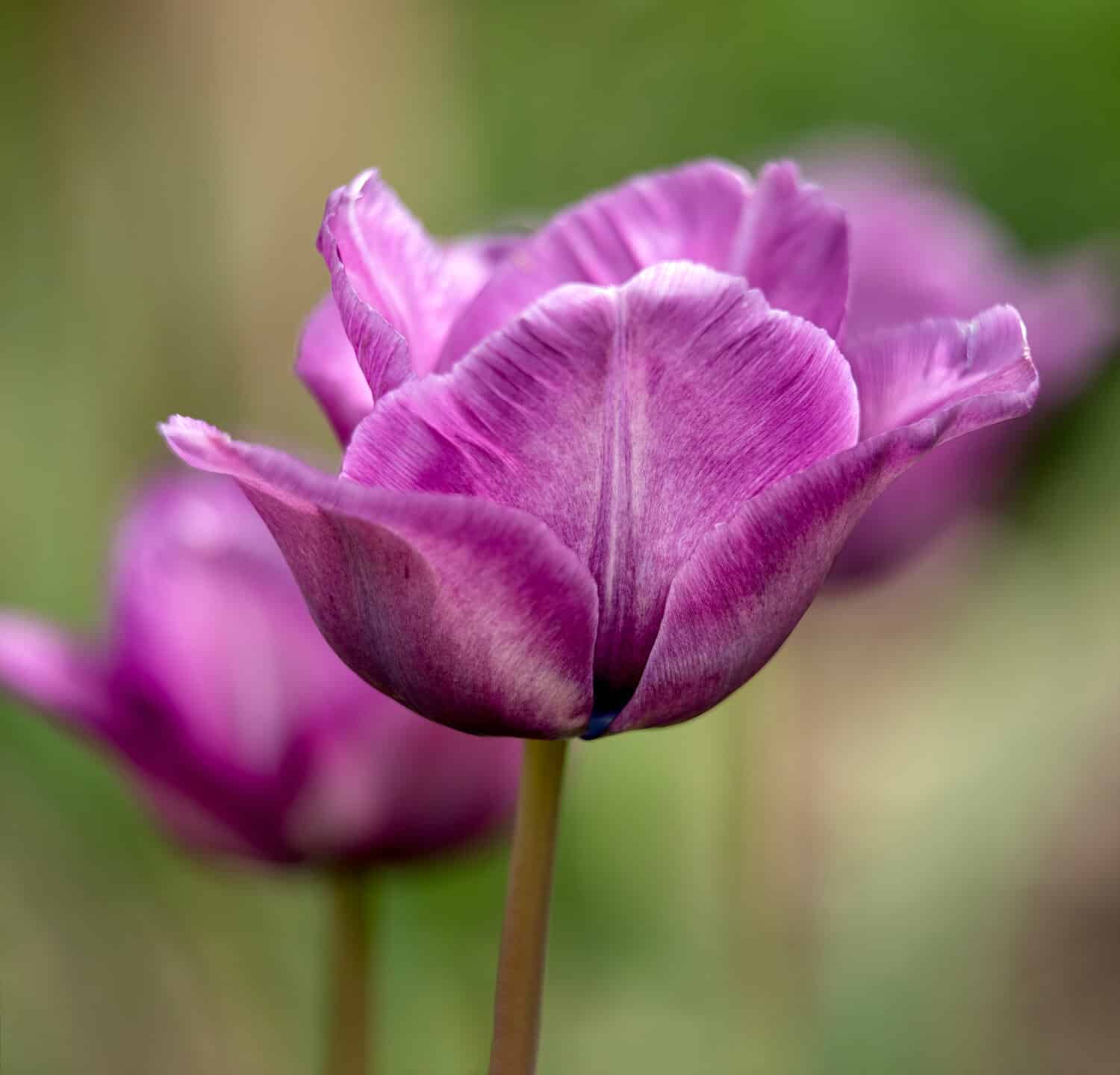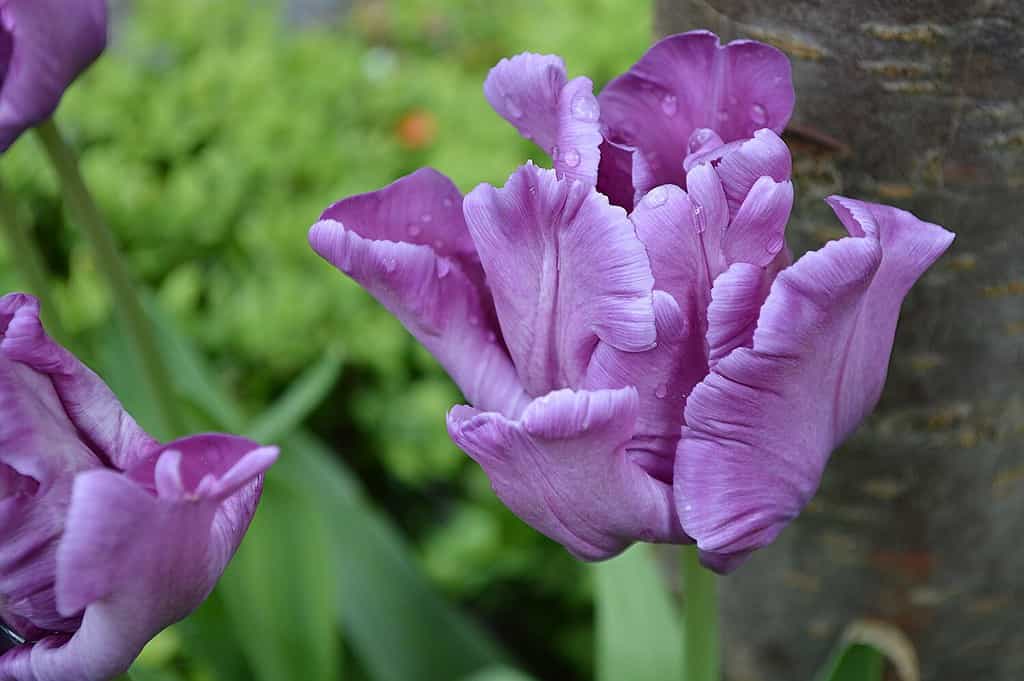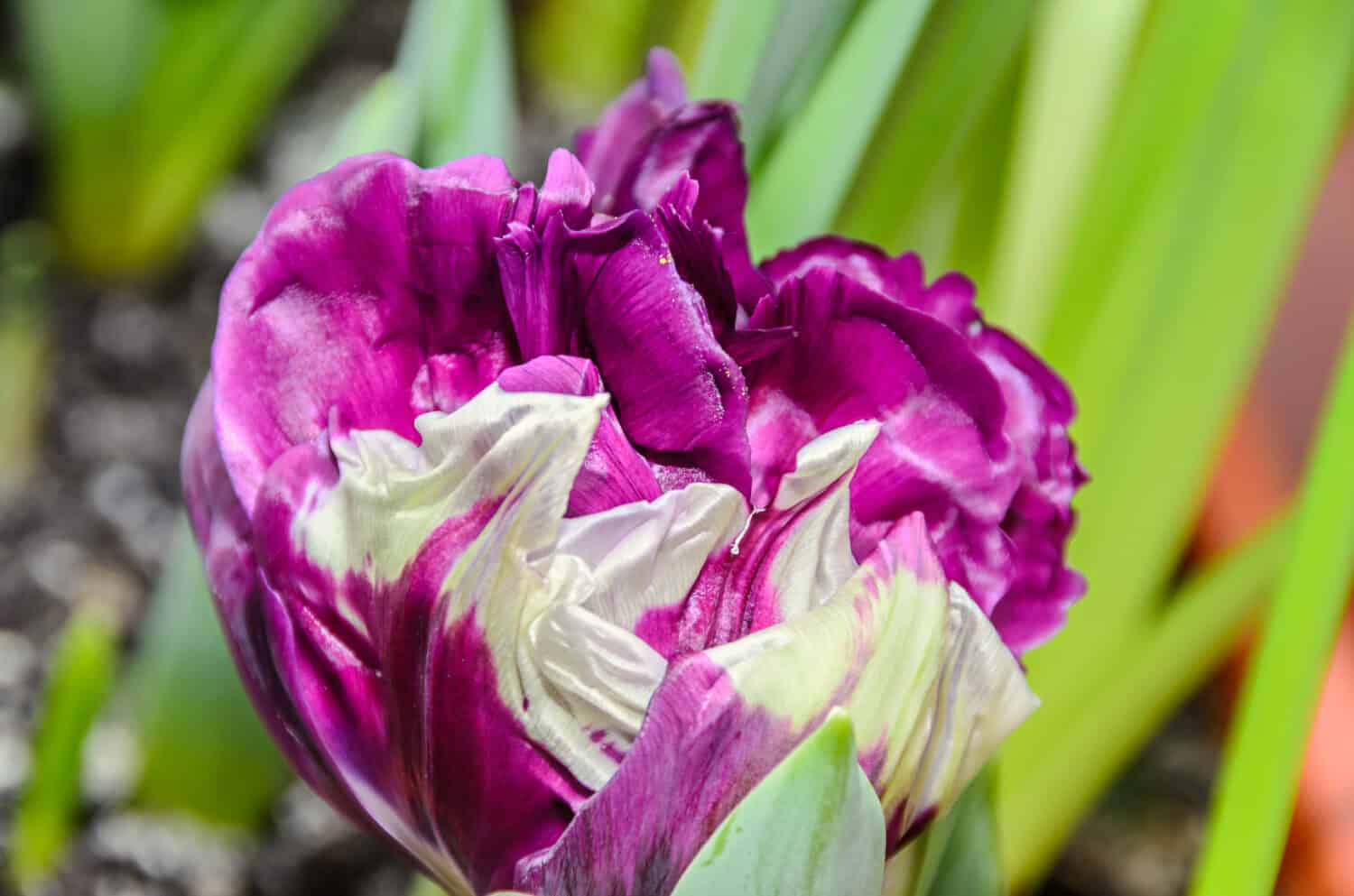Blue tulips are an enigma in the gardening world. Horticulturists have been trying to create a true blue tulip for centuries. However, the only existing blue tulips are dyed or digitally manipulated in photographs.
Even so, there are a few tulips with blue notes that get classified under the blue label. Let’s dive into five types of blue tulips to add to your garden.
The History of Blue Tulips
Tulips have an intriguing history dating back centuries. These vibrant flowers originated in Central Asia and were first cultivated by the Ottoman Empire. However, the Dutch fell in love with tulips and became known around the globe for their cultivation.
One of the most fascinating chapters in tulip history is the infamous Tulip Mania that gripped the Netherlands in the 17th century. During this time, tulips became the subject of an economic frenzy. Demand (and prices) skyrocketed, and tulips became synonymous with wealth and status. People were willing to trade their homes, livestock, and fortunes for a single tulip bulb.
Eventually, the bubble burst, leading to a financial crash that left many in ruin.
Tulips come in various colors. Yet, despite popular belief, blue tulips do not naturally occur in nature. The genetic composition of tulips does not contain the necessary pigments to produce a true blue flower.
Although plant breeders have attempted to create blue tulips through hybridization and genetic modification, their efforts have not been successful. Many viewers were captivated by stunning blue tulips at the 2017 Philadelphia Flower Show, but these proved to be dyed.
As blue tulips do not exist naturally, they have no specific symbolism attached to them.
While no true blue tulips exist, there are many purple tulips with blue tones. Here are a few types of blue tulips based on their subtle blue hue.
Bleu Aimable

Bleu Aimable translates from French to “Kind Blue.”
©Chris Lawrence Travel/Shutterstock.com
Botanical Name: Tulipa ‘Bleu Amiable’
The Tulipa ‘Bleu Aimable’ is a mesmerizing blend of lavender-blue petals that gently transition to a delicate shade of soft lilac towards the center. Cultivated in 1910, this beautiful tulip has elongated petals that taper to a pointed tip. The name translates from French to “Kind Blue.”
A single late-season bloomer, the Blue Aimable is easy to grow and will reach up to 24 inches tall with proper care. Give this blue beauty plenty of sun, well-draining soil, and plant in USDA zones 3-8. The Bleu Aimable will tolerate partial shade.
Differences in soil acidity and lighting could impact the tone of this bloom, making it appear more blue or purple.
Blue Parrot

Blue Parrot petals are velvety to the touch.
©Joe Kuis/Shutterstock.com
Botanical Name: Tulipa ‘Blue Parrot’
Despite its name, the Blue Parrot tulip is actually a purple variety. However, like many purple tulips, the Blue Parrot exhibits hints of blue in its appearance and often gets grouped under the “blue” category.
The petals of the Blue Parrot are velvety to the touch, gracefully curving outward in a symmetrical cup shape with feathered edges true to its name. Its coloration boasts deep purple and vibrant magenta hues with undertones of blue and white-edged accents. The petals showcase a darker shade near the center, gradually transitioning to a lighter tone toward the edges.
Blue Parrot blooms later in the season and thrives best in full sun and a sheltered garden area. It is well-suited for USDA zones 3-8, requiring well-drained soil. The Blue Parrot can grow up to 24 inches tall with proper care.
Blue Heron

Blue Heron has unique, frilled edges.
©Alesikka/Shutterstock.com
Botanical Name: Tulipa ‘Blue Heron’
The Tulipa ‘Blue Heron’ is a stunning fringed tulip. It has elongated petals with delicate feathered edges— similar to the Blue Parrot. The petals exhibit a rich, royal purple hue with deep blue undertones at their base, gradually transitioning into a mesmerizing shade of light lilac at the edges for a lovely contrast.
This late bloomer grows up to 24 inches tall and can thrive in either full sun or partial shade. It’s easy to grow in USDA zones 3-8 and requires well-draining soil to prevent bacteria growth and root rot.
Victoria’s Secret

Victoria’s Secret has a secret blue eye in the middle.
©Sergey V Kalyakin/Shutterstock.com
Botanical Name: Tulipa ‘Victoria’s Secret’
At a glance, Victoria’s Secret looks like any other purple tulip with very few blue notes on the exterior petals. However, if you look inside the large, showy petals, you’ll find a navy blue eye punctuated by a yellow stamen. While outward appearances are deceiving, Victoria’s Secret has perhaps the truest blue element of all “blue” tulips.
This parrot tulip has a shimmery exterior with the iconic ruffled petals this variety is known for. A mid to late-season bloomer, this glamorous tulip grows up to 20 inches tall with full sun exposure and quick-draining soil. Plant this beauty in USDA zones 3-8 in a sheltered area to protect it from the wind.
Blue Wow

Blue Wow is a lush double tulip.
©ncristian/Shutterstock.com
Botanical Name: Tulipa ‘Blue Wow’
The Blue Wow lives up to its name, even if the blue notes are subtle. This lush bloom has deep, velvety purple petals growing in a thick cluster and curving inward. The outward appearance is similar to an artichoke. The blue tone comes in at the base leaves, with the stem transitioning from a vibrant green to a muted violet-blue shade.
The Blue Wow is listed as a double tulip, but it looks like it belongs in a category of its own. This unique tulip grows up to 18 inches tall and does well in USDA zones 3-8. Plant in full sun in a wind-protected area with well-drained soil.
Thank you for reading! Have some feedback for us? Contact the AZ Animals editorial team.








